With renowned mine financier Robert Friedland owning 16.5% of Clean TeQ Holdings (ASX: CLQ) and China’s Pengxin International Mining holding an equal stake, development of the company’s Syerston nickel-cobalt-scandium project in the Australian state of New South Wales seems almost guaranteed.
The project is one of the largest and highest-grade undeveloped nickel and cobalt resources outside of Africa, and it will be the first mine dedicated to producing the raw materials needed to make nickel sulphate and cobalt sulphate, salts or oxides of the metals that are used in lithium ion batteries to power electric vehicles, Friedland told The Northern Miner.
Cobalt sulphate and nickel sulphate make up the lion’s share of the raw material by cost in lithium batteries, he says, estimating that just 4% of the raw material by cost in a lithium battery is actually lithium, while 15%, plus or minus, is cobalt sulphate, and 80% is nickel sulphate.
“Both of these metals are going to be huge winners to the degree to which the automobile industry goes to batteries or the degree to which home-based battery storage units may incorporate what we call lithium batteries,” Friedland said during an interview with The Northern Miner in March.
Syerston also contains a good amount of scandium, an element that turns aluminum into a “super material” Friedland says, making it weldable, stronger and “much more metallurgically virtuous.”
Scandium oxide can be used to make lighter and stronger aluminum alloys for the aerospace and automotive industries, as well as in the emerging field of 3-D printing.
Friedland joined Clean TeQ’s board as co-chairman in 2016, and says that management may pursue a Canadian listing when the time is right.
An October 2016 prefeasibility study estimated that Syerston could produce 3,100 tonnes of cobalt and 18,200 tonnes of nickel a year for at least two decades with an initial capex of A$906 million (US$683 million). A definitive feasibility study is expected before year-end.
Syerston has proven reserves of 55 million tonnes grading 0.71% nickel, 0.10% cobalt and 640 grams scandium per tonne. Probable reserves tally 41 million tonnes grading 0.58% nickel, 0.10% cobalt and 557 grams scandium per tonne.
The company will use proprietary continuous resin-in-pulp (cRIP) technology to process the ore and produce nickel and cobalt sulphate that will go into battery cathode fabrication.

Workers at a drill site at Clean TeQ Holdings’ Syerston nickel-cobalt-scandium project in New South Wales, Australia. Credit: Clean TeQ Holdings.
The prefeasibility study was based on a flow sheet processing 2.5 million tonnes a year of feed in Syerston’s near-surface resource. The processing plant would consist of a high pressure acid leach circuit followed by Clean TeQ’s cRIP for scandium recovery, then partial neutralization and cRIP for nickel and cobalt recovery.
The nickel and cobalt-rich sulphate solution would be processed through a small solvent extraction separation and purification step before crystallization to produce separate hydrated nickel sulphate and hydrated cobalt sulphate products. The scandium-rich solution would be processed through selective precipitation stages and a final calcination to make high-purity scandium oxide.
Andrew Mikitchook of BMO Capital Markets notes that while the cRIP technology has been used in other applications in the mining sector, it has never been used on nickel or cobalt laterites.
The mining analyst initiated coverage of Clean TeQ in June with an “outperform” rating and a A$1.40-per-share target price — nearly twice the company’s A73¢ per share at press time.
“The permitted Syerston project is one of the few sizeable advanced cobalt development projects worldwide, and represents one of the largest potential sources of cobalt outside of Africa,” Mikitchook said in a research note to clients.
The analyst notes that 3,100 tonnes of cobalt a year equates to cathodes for the batteries of 500,000 electric vehicles a year. To put this into context, he says, 800,000 electric vehicles were produced in 2016, and this number is expected to grow to 2 million electric vehicles a year by 2020.
He forecasts that construction and commissioning of the wholly owned project will run from 2018 through to 2020, with commercial production starting in 2021.
Financing the project shouldn’t be too hard. Pengxin International Mining is part of the Pengxin Group, a privately held Chinese conglomerate based in Shanghai with interests in mining, real estate, construction, water treatment and dairy farms.
The Chinese company has agreed to help Clean TeQ procure Chinese project financiers to participate in financing the project for part of its capital costs. Clean TeQ can use Pengxin’s business network to market off-take agreements and water treatment. The Pengxin Group is the largest shareholder in one of China’s largest publicly traded water-treatment companies. Pengxin International Mining also owns a copper mine in the Democratic Republic of the Congo, the world’s largest cobalt producer, with 60% of all cobalt mined on the planet.
Mikitchook says that cobalt would contribute 24% of Syerston’s life-of-mine revenue based on BMO’s long-term average price of US$15 per lb. cobalt, and 45% at current spot prices of US$29 per lb. cobalt.
Last year 109,000 tonnes of cobalt was produced, he says, and virtually all of it as a by-product from copper and nickel mines.
“Supply sources are concentrated in the Congo (with 48% of global reserves), which has seen negative publicity surrounding artisanal mining, creating some demand for ethical and auditable sources of cobalt,” he wrote.
The cobalt market entered a deficit in 2016, he says, and forecasts “are calling for further deficits in the near- to medium-term, driven by cobalt cathode demand for lithium ion batteries for electric vehicles.”
He says that cobalt consumption in cathodes for all battery applications — including vehicles and other portable storage — is 30,000 to 40,000 tonnes, and expects that demand for cobalt cathodes will grow to 60,000 tonnes a year in 2020.
In June, Clean TeQ announced that it had produced samples of high-purity nickel sulphate from processing Syerston ore at the company’s nickel and cobalt recovery purification demonstration plant in Perth.
The samples were sent to potential customers in the lithium ion battery supply chain for testing and analysis. Production of high-purity cobalt sulphate samples are now underway, and will be sent to potential customers.
Clean TeQ is in discussions with several companies in the lithium ion battery cathode supply chain to nail down offtake commitments and says it “has received strong expressions of interest for offtake from a number of these parties.”
The project is near the Moomba-Sydney natural gas pipeline, and within 20 km of a rail line. A water pipeline would be built, which would provide water from a borefield near the Lachlan River, 65 km south.

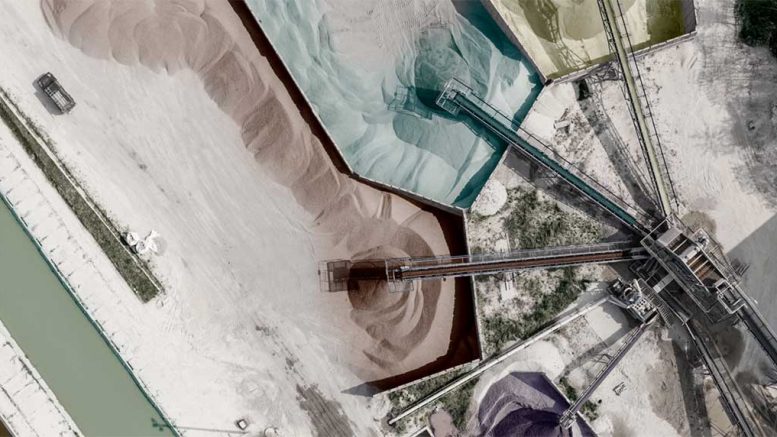
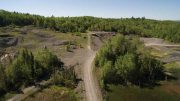
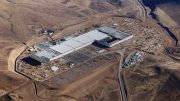
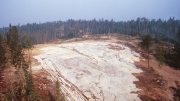
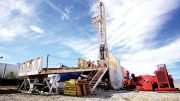
Be the first to comment on "Friedland’s Clean TeQ, China’s Pengxin eye Syerston project"